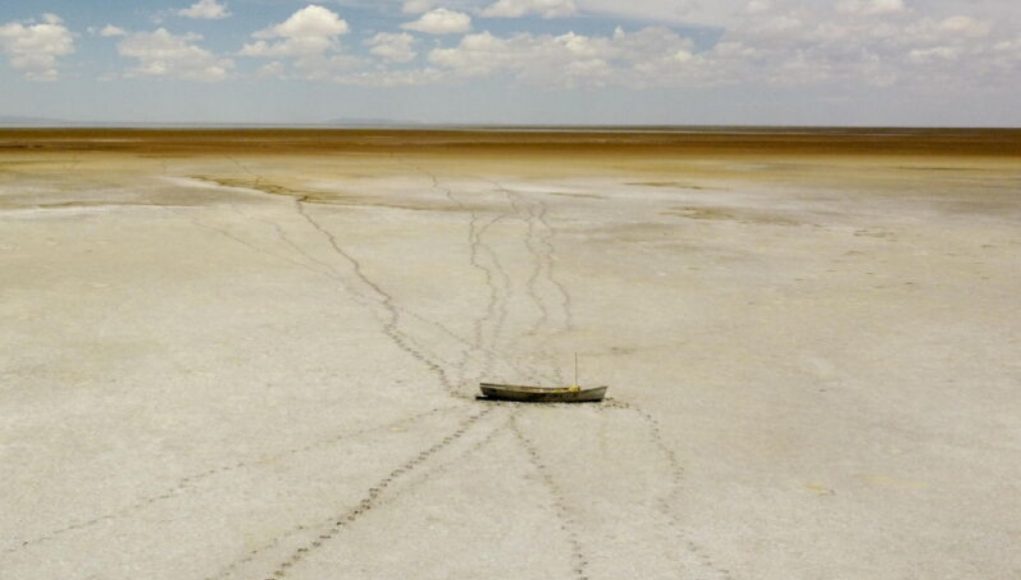The world’s largest lakes are in trouble, and it’s not looking good. A new study reveals that water storage in these bodies of water has plummeted by a staggering 21.5 gigatons per year over the past three decades. That’s equivalent to the entire annual water consumption of the United States! The study, published in Science, analyzed satellite data from nearly 2,000 lakes and reservoirs between 1992 and 2020, and the results are alarming. More than half of the bodies of water showed “significant storage declines,” and the researchers attribute this to climate warming.
The combination of satellite images, climate data, and hydrological models allowed the scientists to determine whether the declines were due to climate factors or other impacts, such as water diversions for agriculture or cities. Unfortunately, they found that a quarter of the world’s population lives in basins where lakes are drying up, which could lead to starvation, dislocation, and even international conflict.
The study also identified the Southwestern US as a troubled area, confirming the challenges spurred by dwindling water supplies in the nation’s two largest reservoirs, Lake Powell and Lake Meade on the Colorado River. But it’s not just the US that’s affected. The loss of water storage is prevalent across major global regions, including much of interior Asia and the Middle East, northeastern Europe, as well as Oceania, North and South America, and southern Africa.
While some lakes have shown water storage gains, they are mainly in remote and sparsely populated regions. Only about one-third of the total decline of water storage in drying lakes is offset by increases in other lakes. The researchers also found that the Great Lakes did not show a climate warming fingerprint during the study period, but that doesn’t mean it’s not there. The swings in rainfall have caused water levels in the Great Lakes to drop steeply and then increase sharply again.
It’s clear that we need to take action to address this global crisis. The first step is to acknowledge the problem and work together to find solutions. We can’t afford to ignore the warning signs any longer.
Climate change is having a dramatic effect on our planet’s freshwater supplies, and the world’s largest lakes are no exception. As the global climate warms and dries, many of these vast bodies of water are under threat.
Recent research has found that nearly all of the world’s Great Lakes—Including Lake Superior, Lake Michigan, Lake Huron, Lake Erie, and Lake Ontario—are becoming warmer and dryer due to rising air and water temperatures. The lakes’ average surface temperature in 2018 was about 1.2 Celsius degrees hotter than it was in 1900. Similarly, the evaporation rate of the lakes has increased by 8% over the last two decades.
These changes have serious consequences. The warming temperatures are causing lake water to become less dense, resulting in dramatic decreases in lake levels. This makes it more difficult for wildlife to move around and access food sources, resulting in decreased populations of fish, water birds, and other aquatic species. Furthermore, the diminishing water levels have made navigation more difficult, leading to shipping disruptions and economic impacts.
These problems are likely to worsen in coming years. Experiments suggest that if the ongoing warming trend continues, lake temperatures could increase by as much as 6.5 Celsius degrees by 2100. This would result in further reductions in lake levels and increased difficulty for organisms dependent on the freshwater supply. An additional problem is the deepening of the lake basins, as the waters become saltier as the levels recede. This could result in a permanent alteration of the ecology of some of the most vital wildlife habitats in the world.
Clearly, the world’s largest lakes are in danger due to the changing climate, and their future hangs in the balance. In order to prevent further degradation and reduce the potential impacts of further warming, it is essential that immediate and meaningful action is taken to reduce carbon emissions and other sources of global warming. Without swift and decisive action, these vital ecosystems could be at risk of irreparable harm.




















